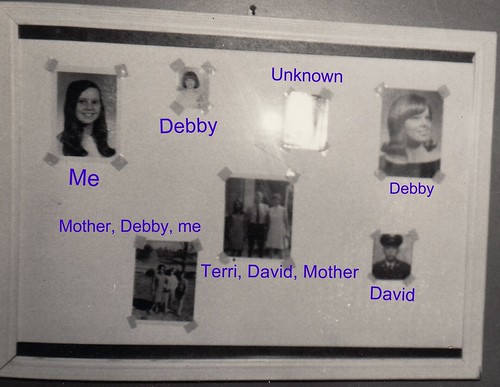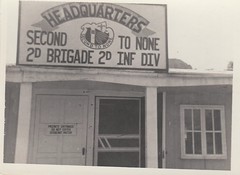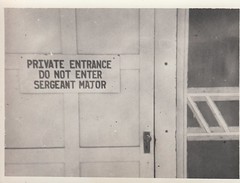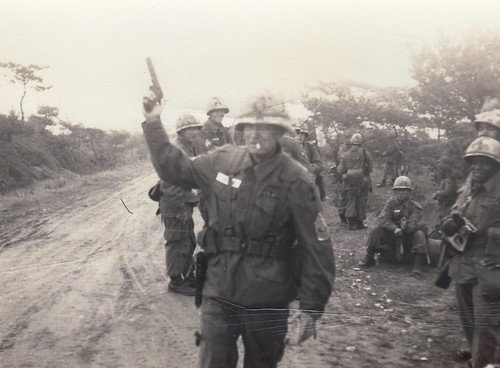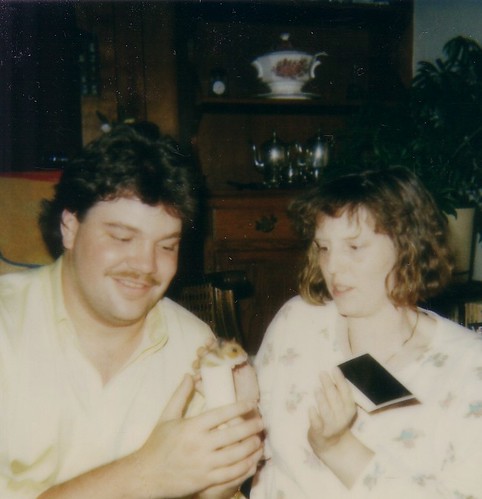It’s a rarity to find a photo of my mother with all her siblings. Though she has several group shots of them–including with their parents–she’s usually not in them, a drawback to being a military wife. It wasn’t until after my mother died that my sister told me that she could remember hearing, as a little girl, my mother cry and cry when she received a call telling her that her father had died, not only at the news, but because my parents didn’t have enough money for her to go home for his funeral. It’s a heartbreak I never remember her talking about.
Though I do know some of the hardships and challenges she and her family faced, that was never what we heard at reunions, like this one sometime in the late 60s/very early 70s.

Front row: Terry (called Buster), Lamar, Buford (called Boots), John, Gerald
If you think this aging group might have been somewhat staid and–well, elderly–you would be wrong. Together, they reverted to the kids they used to be and would tell stories of growing up that would leave them all hollering with laughter until they had to wipe away tears. Even the sweetest of my aunts and quietest of my uncles had wicked senses of humor. While other kids might run and play, I stuck close to this bunch of storytellers ’cause it’s where the best action was.
As kids, John and Gerald were called Mutt and Jeff after characters in one of the first daily comic strips. By the time I came along, I don’t remember anyone calling Gerald “Jeff” anymore, but they did often still call John “Mutt.” He was apparently among the wildest of the boys, and for a period took to wearing a Tarzan costume, jumping from trees, and wielding a knife.
One afternoon an elderly lady–we’ll call her Miss Elizabeth–came calling on my grandmother. They were sitting in the parlor drinking ice tea and talking, unaware that outside a battle was being waged between Uncle John and one of his brothers. His adversary snuck inside the house and made it to the parlor, hiding behind Miss Elizabeth’s chair without being spotted by the women. John came barreling in with a Tarzan yell, saw his brother, whipped out his knife from his loincloth, and said, “I’m going to KILL you” as he lunged toward Miss Elizabeth.
Over the years in the retelling, Miss Elizabeth’s reaction varied from fainting to hysterics to having to be escorted home by the repentant boys. What never changed was Uncle John’s blatantly false look of remorse as the story came to its dramatic conclusion, and the sly glance of pride he’d send my way.
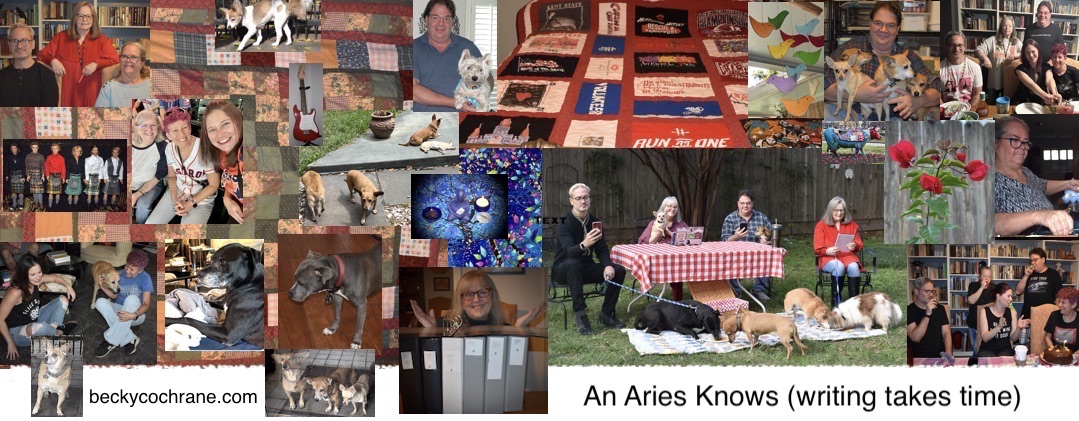
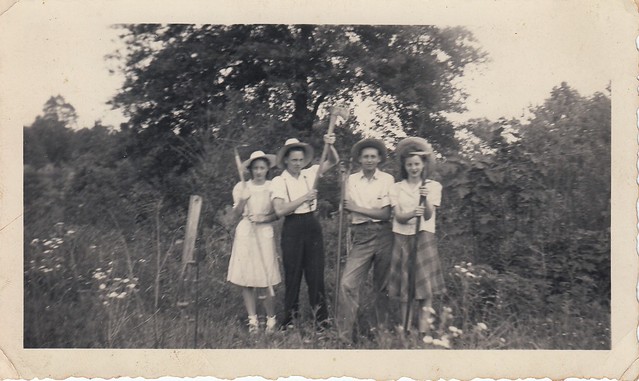
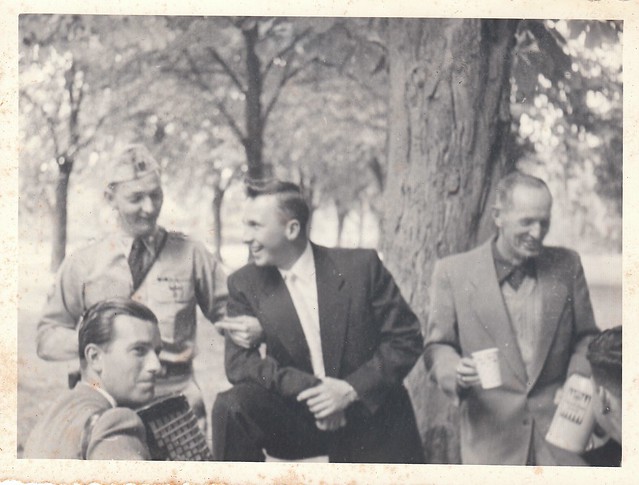
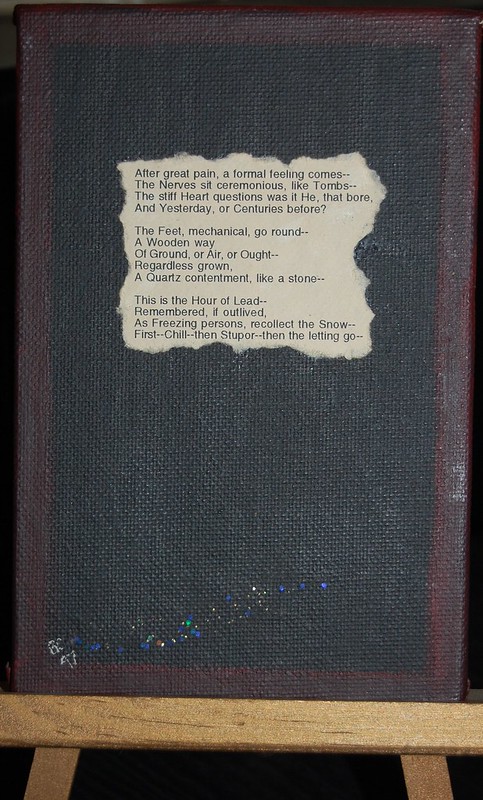
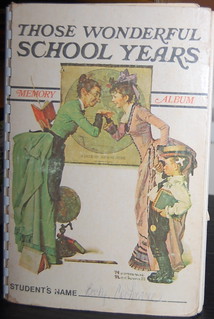 Do you have your report cards? I have all of mine except, mysteriously, from third grade. Maybe we moved before I could get it. I think my mother made it easier on me to keep up with that stuff by giving me this book somewhere along the way.
Do you have your report cards? I have all of mine except, mysteriously, from third grade. Maybe we moved before I could get it. I think my mother made it easier on me to keep up with that stuff by giving me this book somewhere along the way.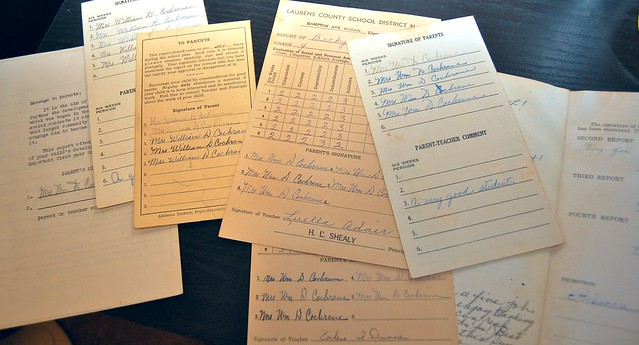

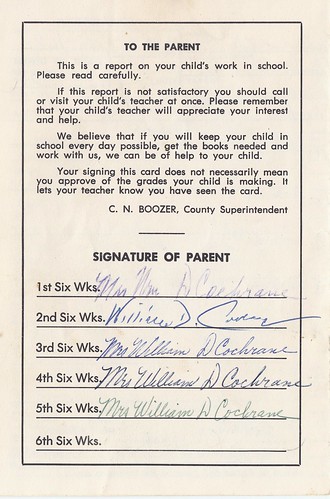
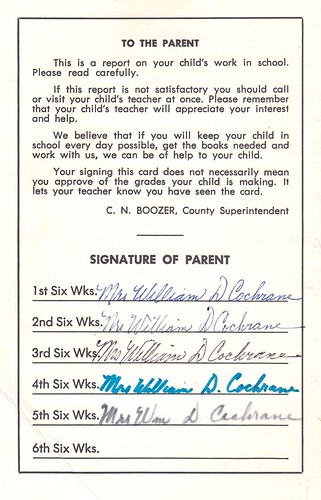

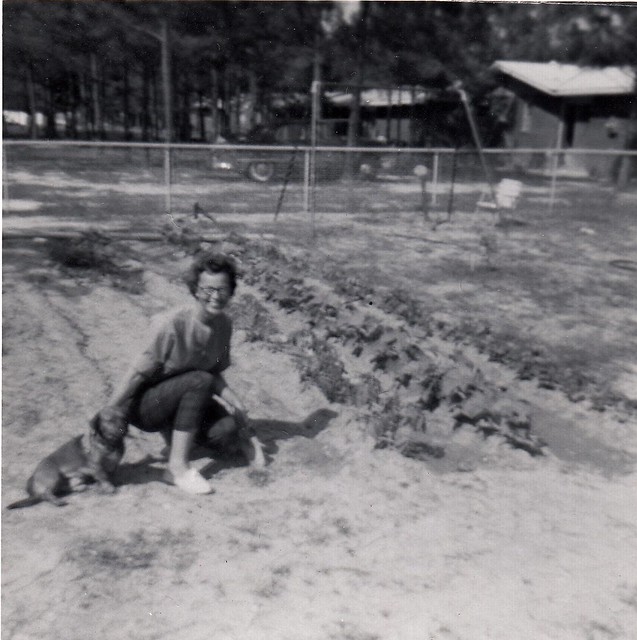

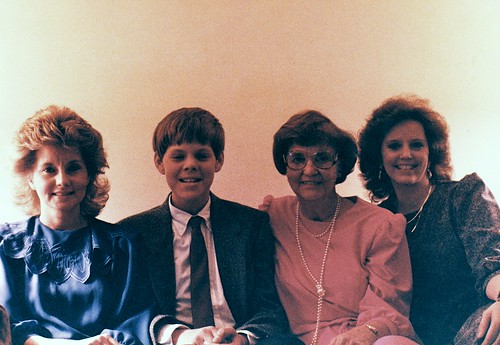
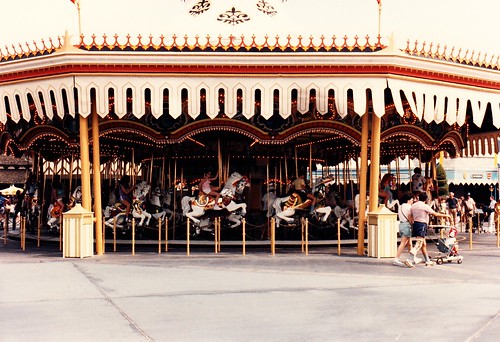
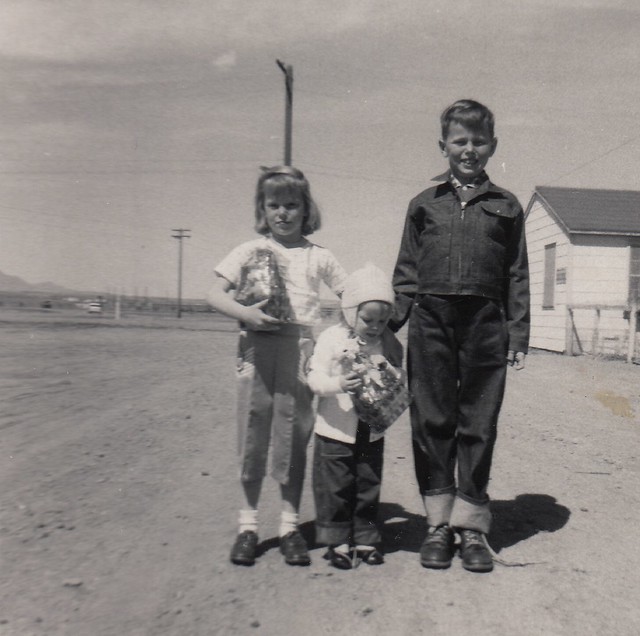
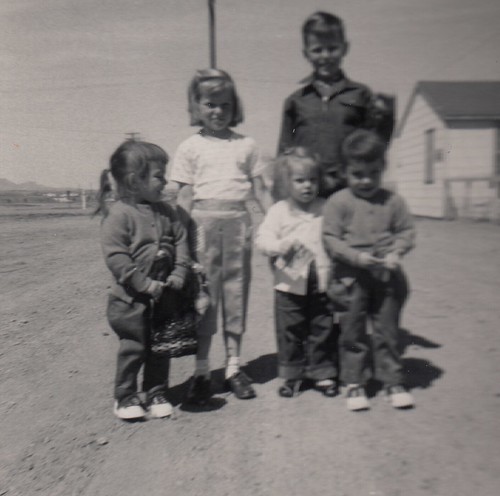
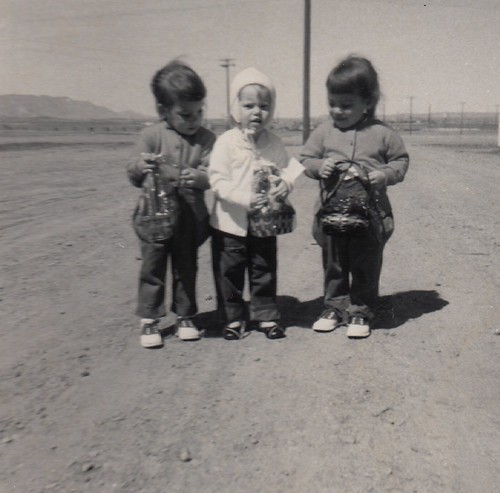

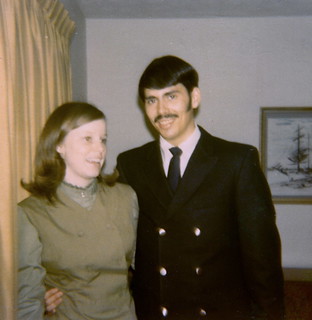 I’m still struggling to find the right way to work on these old photos. Tom found a Mac-friendly version of the software that came with the old scanner that I can purchase. The company offered a free trial version, which I downloaded so I could experiment with it again. Only it won’t save high quality versions of the photos I edit–I guess they only allow that if I pay for it? Which seems counter-intuitive. If I were a new user, shouldn’t I be so dazzled by everything the software can do that at the end of fourteen days I won’t be able to live without it?
I’m still struggling to find the right way to work on these old photos. Tom found a Mac-friendly version of the software that came with the old scanner that I can purchase. The company offered a free trial version, which I downloaded so I could experiment with it again. Only it won’t save high quality versions of the photos I edit–I guess they only allow that if I pay for it? Which seems counter-intuitive. If I were a new user, shouldn’t I be so dazzled by everything the software can do that at the end of fourteen days I won’t be able to live without it?